Year 6
The English curriculum is built around the three interrelated strands of language, literature and literacy. Teaching and learning programs should balance and integrate all three strands. Together, the strands focus on developing students' knowledge, understanding and skills in listening, reading, viewing, speaking, writing and creating. Learning in English builds on concepts, skills and processes developed in earlier years, and teachers will revisit and strengthen these as needed.
In Years 5 and 6, students communicate with peers and teachers from other classes and schools, community members, and individuals and groups, in a range of face-to-face and online/virtual environments.
Students engage with a variety of texts for enjoyment. They listen to, read, view, interpret and evaluate spoken, written and multimodal texts in which the primary purpose is aesthetic, as well as texts designed to inform and persuade. These include various types of media texts including newspapers, film and digital texts, junior and early adolescent novels, poetry, non-fiction and dramatic performances. Students develop their understanding of how texts, including media texts, are influenced by context, purpose and audience.
The range of literary texts for Foundation to Year 10 comprises Australian literature, including the oral narrative traditions of Aboriginal and Torres Strait Islander Peoples, as well as the contemporary literature of these two cultural groups, and classic and contemporary world literature, including texts from and about Asia.
Literary texts that support and extend students in Years 5 and 6 as independent readers describe complex sequences, a range of non-stereotypical characters and elaborated events including flashbacks and shifts in time. These texts explore themes of interpersonal relationships and ethical dilemmas within real-world and fantasy settings. Informative texts supply technical and content information about a wide range of topics of interest as well as topics being studied in other areas of the curriculum. Text structures include chapters, headings and subheadings, tables of contents, indexes and glossaries. Language features include complex sentences, unfamiliar technical vocabulary, figurative language, and information presented in various types of graphics.
Students create a range of imaginative, informative and persuasive types of texts such as narratives, procedures, performances, reports, reviews, explanations and discussions.
(source: www.australiancurriculum.edu.au)
Achievement Standard
Receptive modes (listening, reading and viewing)
By the end of Year 6, students understand how the use of text structures can achieve particular effects. They analyse and explain how language features, images and vocabulary are used by different authors to represent ideas, characters and events.
Students compare and analyse information in different and complex texts, explaining literal and implied meaning. They select and use evidence from a text to explain their response to it. They listen to discussions, clarifying content and challenging others' ideas.
Productive modes (speaking, writing and creating)
Students understand how language features and language patterns can be used for emphasis. They show how specific details can be used to support a point of view. They explain how their choices of language features and images are used.
Students create detailed texts elaborating on key ideas for a range of purposes and audiences. They make presentations and contribute actively to class and group discussions, using a variety of strategies for effect. They demonstrate an understanding of grammar, and make considered vocabulary choices to enhance cohesion and structure in their writing. They use accurate spelling and punctuation for clarity and make and explain editorial choices based on criteria.
(source: www.australiancurriculum.edu.au)
- Plus Plan
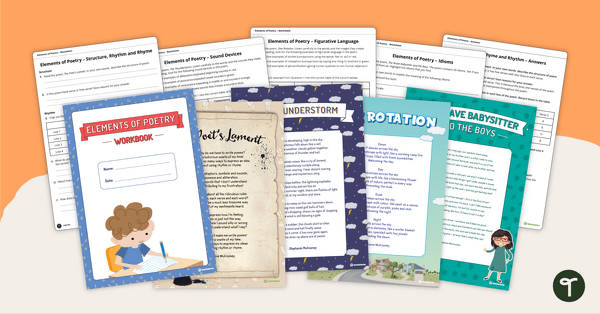
Elements of Poetry Workbook
Explore the wonders of poetry with this set of poems and accompanying worksheets designed specifically for children.
- Plus Plan

Elements of Poetry PowerPoint - Year 5 and Year 6
A 25 slide editable PowerPoint template to use when introducing students to the elements of poetry.
- Free Plan
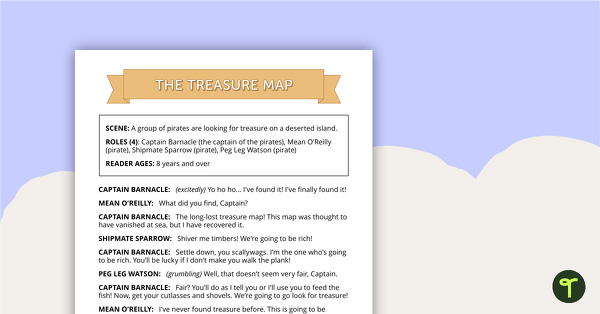
Readers' Theatre Script - Treasure Map
A script which can be used during readers' theatre or Drama sessions, aimed at students 8 years and over.
- Free Plan
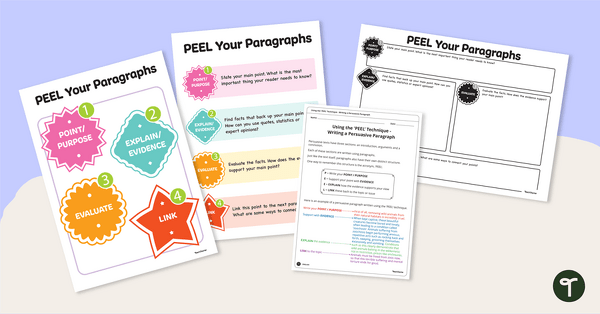
PEEL Paragraph Structure Poster and Worksheets
Explore the acronym PEEL to help with paragraph technique during persuasive writing lessons.
- Plus Plan
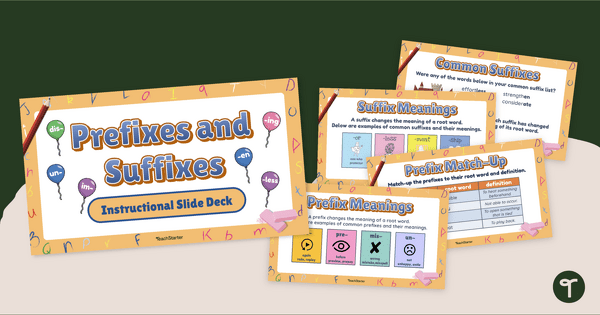
Prefixes and Suffixes PowerPoint
Learn prefix and suffix concepts with an interactive teaching presentation.
- Plus Plan
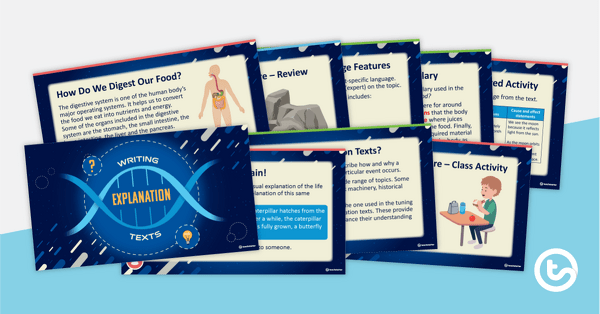
Writing Explanation Texts PowerPoint
A 33-slide editable PowerPoint template to use when teaching your students about explanation writing.
- Plus Plan
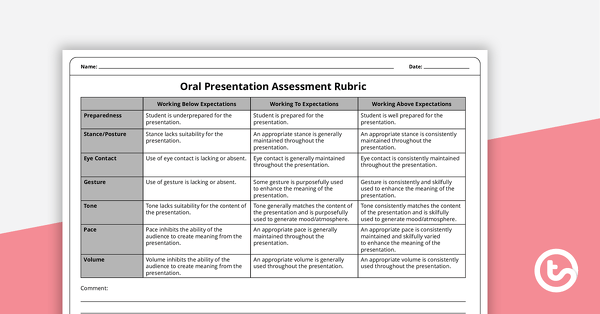
Oral Presentation Assessment Rubric
A rubric designed to help teachers to assess students' oral presentations.
- Free Plan
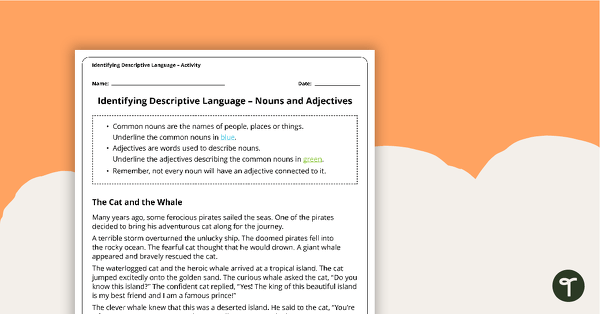
Identifying Descriptive Language Worksheets - Nouns, Adjectives, Verbs and Adverbs
A set of 5 worksheets to help your students identify descriptive language in narrative texts.
- Plus Plan
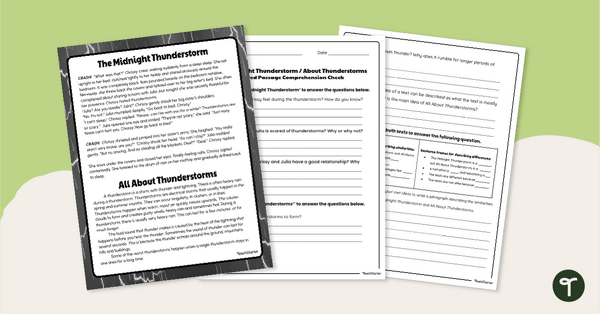
Paired Passage Worksheets - Thunderstorms
Use paired passages to help your student practise applying reading comprehension strategies.
- Plus Plan
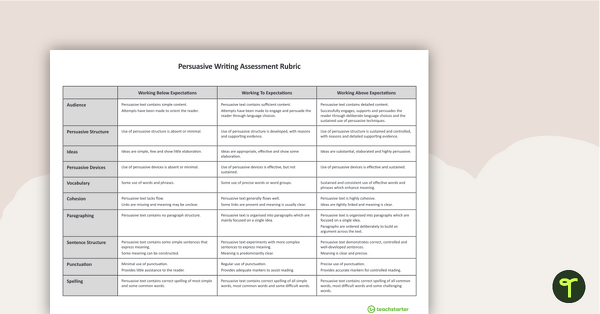
NAPLAN-Style Assessment Rubric - Persuasive Writing
A NAPLAN-style rubric designed to help teachers to assess students' persuasive writing.
- Plus Plan
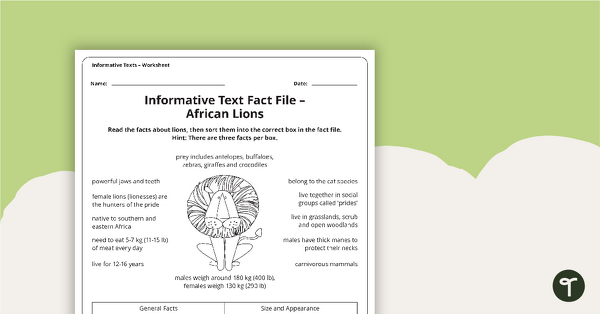
Information Report Fact Files and Scaffolding Sheet
Use this set of 5 fact files and information report scaffold sheet to support your students in writing a detailed and well-structured information report.
- Plus Plan
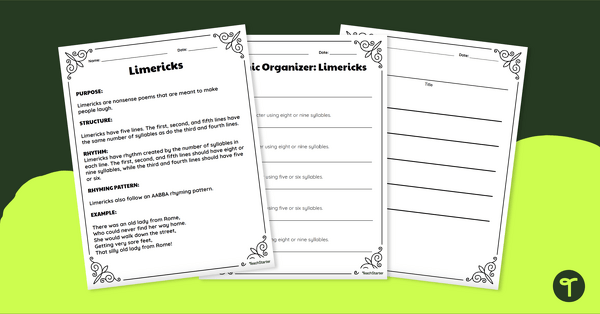
Limericks for Kids - Poem Template
A 3-page limerick template and instructions for students to use when learning how to write a limerick.
- Free Plan
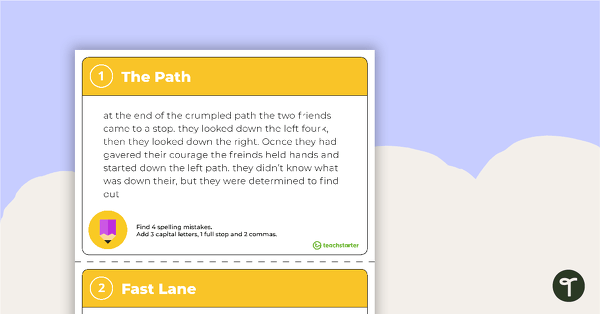
Editing Passage Task Cards - Year 6
A set of 20 editing passage task cards with answers.
- Plus Plan
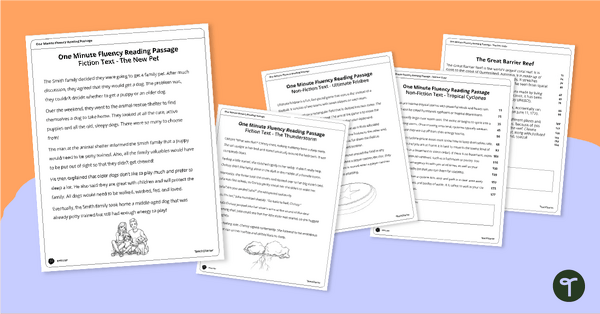
Year 6 Reading Fluency Passages
Assess student fluency with a printable pack of reading fluency passages for Year 6.
- Plus Plan
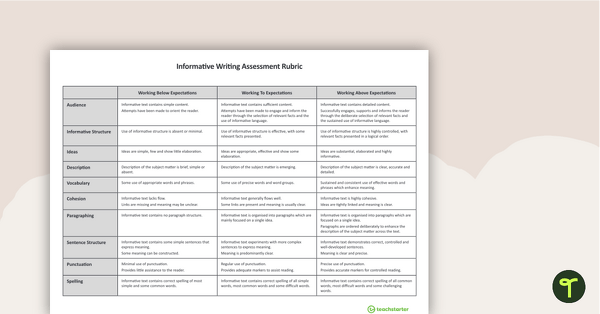
NAPLAN-Style Assessment Rubric - Informative Writing
A NAPLAN-style rubric designed to help teachers to assess students' informative writing.
- Plus Plan
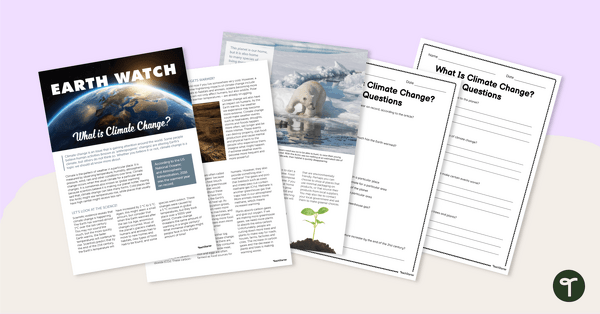
What Is Climate Change? Comprehension Worksheet
Teach your students about the perils of climate change with this comprehensive article with accompanying comprehension questions.
- Plus Plan
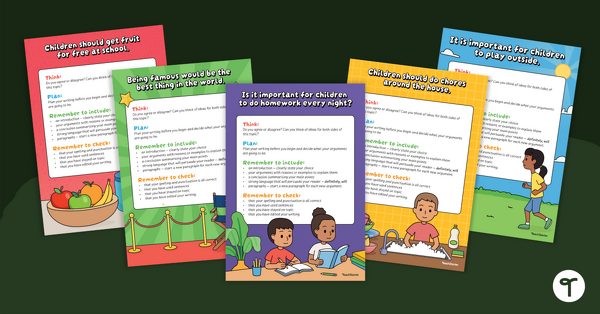
5 Persuasive Writing Prompts
Inspire your students through these relevant persuasive writing prompts.
- Free Plan
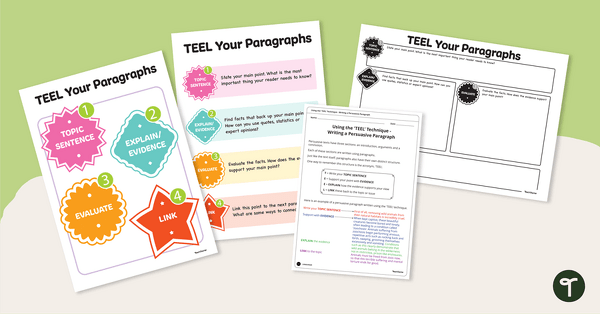
TEEL Paragraph Structure Poster and Worksheets
Explore the acronym TEEL to help with paragraph technique during persuasive writing lessons.
- Plus Plan
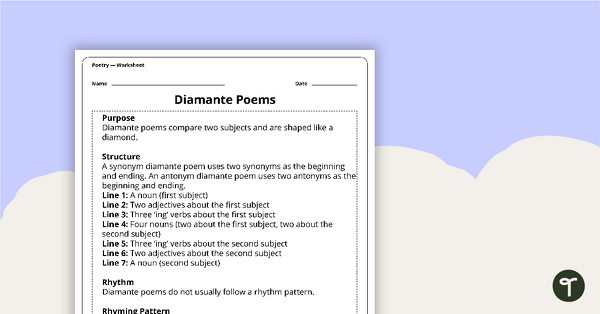
Writing a Diamante Poem Worksheet
A 2 page worksheet for students to use when learning how to write a diamante poem.
- Plus Plan
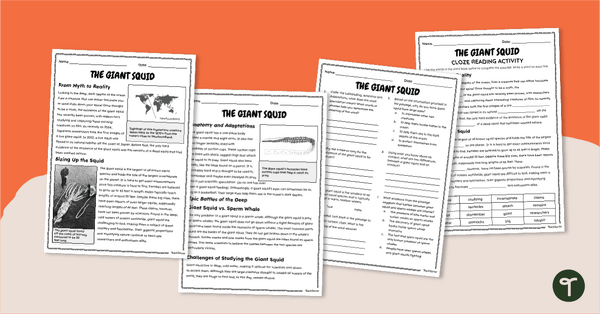
Giant Squid Reading Comprehension Worksheets - Year 5
Read and learn about the features and adaptations of the giant squid with reading comprehension worksheets for years 5 and 6.
- Plus Plan
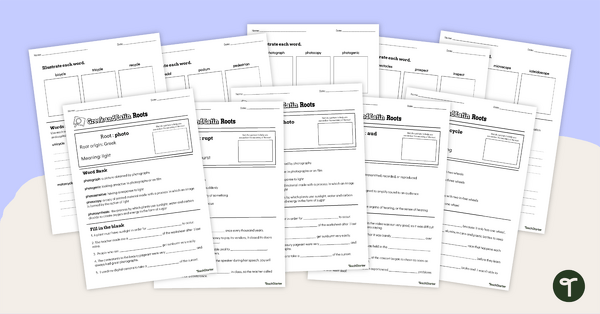
Greek and Latin Roots Worksheet Set
Practise using vocabulary containing Greek roots and Latin roots with these weekly root word worksheets.
- Plus Plan
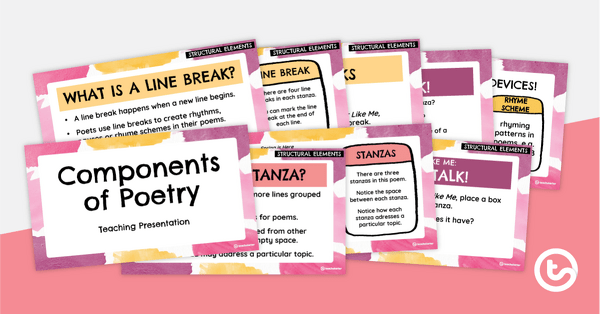
Components of Poetry PowerPoint
An editable PowerPoint to use when teaching the essential components of poetry.
- Plus Plan
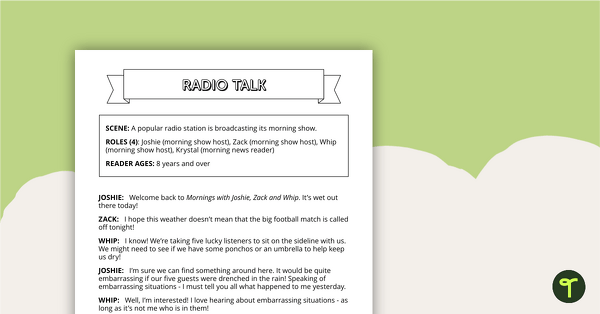
Readers' Theatre Script - Radio Talk
A script which can be used during readers' theatre or Drama sessions, aimed at students 8 years and over.
- Plus Plan
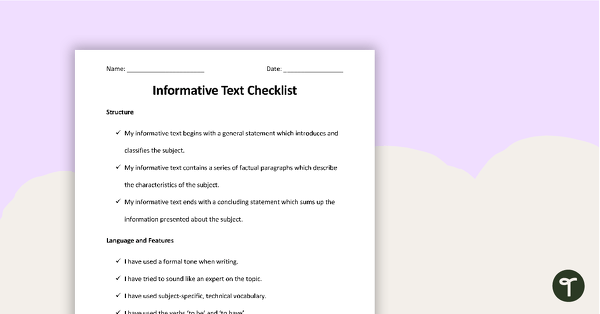
Informative Text Checklist - Structure, Language and Features
A checklist for students to use when proofreading and editing their informative texts.
- Plus Plan
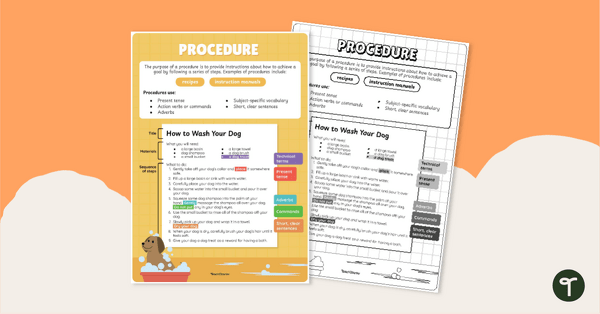
Procedure Text Type Poster With Annotations
Display this procedure text with annotations to help students identify the structure of a procedure.
- Plus Plan
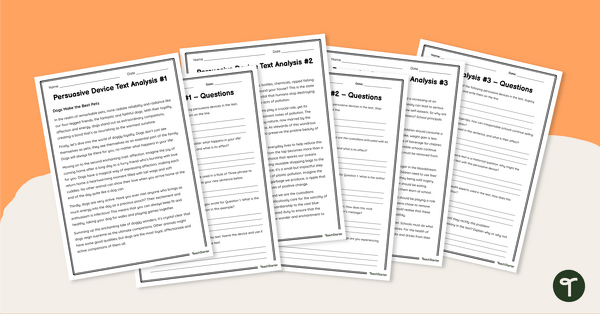
Analysing Persuasive Devices Worksheets
Get students analysing persuasive techniques and their effects on audiences with this set of three texts with accompanying questions.
- Free Plan
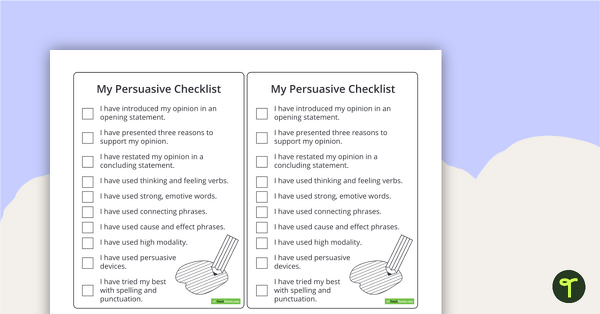
Persuasive Writing Checklist (Simplified Version)
A checklist for students to use when proofreading and editing their persuasive writing.
- Plus Plan
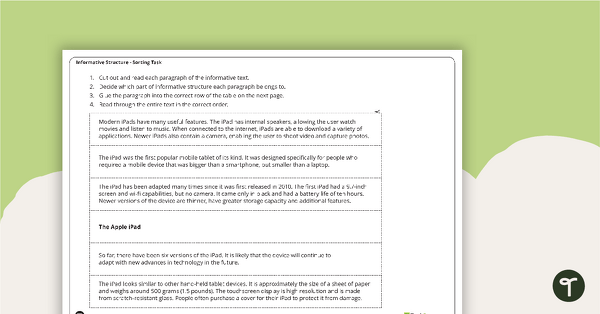
Information Report Structure Worksheet – The Apple iPad
Teach your students about information report structure with this cut-and-paste sequencing worksheet.
- Plus Plan
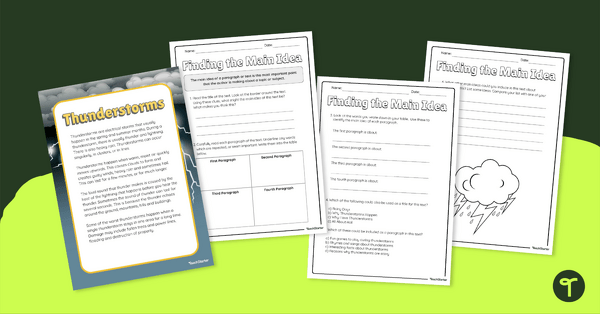
Finding the Main Idea - Comprehension Task (Thunderstorms)
A task to use when teaching your students reading comprehension strategies.
- Plus Plan
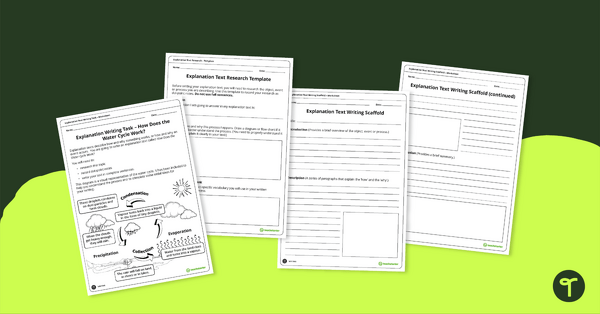
Explanation Text Writing Task – How Does the Water Cycle Work?
A scaffolded writing task for students to complete when learning about the explanation text type.
- Plus Plan
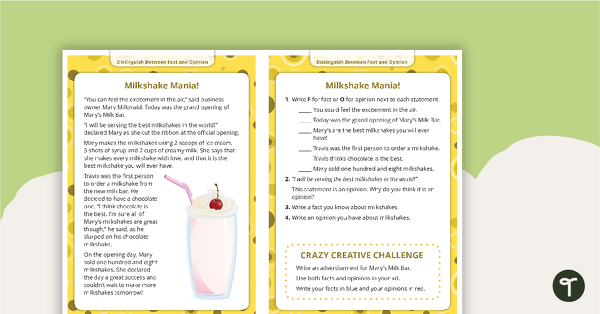
Comprehension Task Cards - Distinguishing Between Fact and Opinion
A set of comprehension task cards to help students distinguish between fact and opinion when reading.
- Free Plan
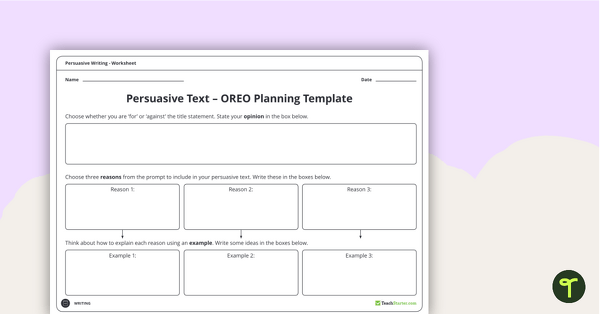
Persuasive Text Planning Template (Using OREO)
A planning template for students to use when writing a persuasive text.